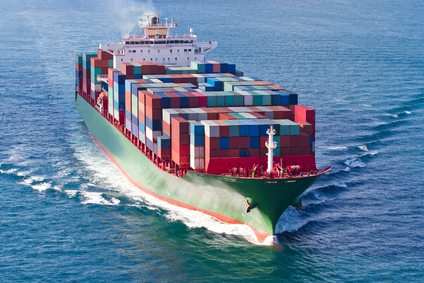CONTAINER SHIP DESIGN
CONTAINER SHIP DESIGN
Excerpt from :World Shipping | April 29 2015
Some of the world’s biggest container ships are about 1,300 feet long – that’s nearly 400 meters or the distance around an Olympic running track – with a maximum width of 180 feet (55 meters). Their engines weigh 2,300 tons, their propellers 130 tons, and there are twenty-one storeys between their bridge and their engine room. They can be operated by teams of just thirteen people and a sophisticated computer system and carry an astonishing 11,000 20-foot containers. If that number of containers were loaded onto a train it would need to be 44 miles or 71 kilometers long!
 {Photo Source: Depositphotos.com/EvrenKalinbacak}
{Photo Source: Depositphotos.com/EvrenKalinbacak}
Some other facts about containers ships:
- Container ships have an approximate lifespan of 26 years.
- A large container ship engine has about 1,000 times more power than a family car.
- The gantry cranes that load and unload container ships can be 430 feet tall and weigh up to 2,000 tons.
- Container ships are technologically advanced. A good example is the computer software that enables precise planning for the loading and unloading of containers and keeps the vessel balanced by increasing and decreasing ballast at the touch of a button.
- A recent study by Lloyd’s Register found that the fuel efficiency of container ships (4,500 TEU capacity) has improved 35% between 1985 and 2008.
- It is estimated that on average a container ship emits around 40 times less CO2 than a large freight aircraft and over three times less than a heavy truck.
- Container shipping is estimated to be two and a half times more energy efficient than rail and 7 times more so than road.
- Weekly safety and fire drill sessions take place for all crewmembers when the vessel is at sea to make sure that they are practiced for any real emergencies.
